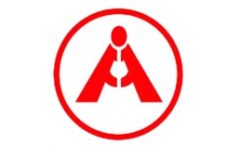When you’ve generated a list of potential actions, it can be difficult to know which one to work on next. A more powerful way is to use Impact, Effort, and Energy mapping. After your team has generated the list of actions, use Dot Voting to prioritize which actions the team most wants to work on. For example, you might have used Force Field Analysis to find the strongest supporting and inhibiting factors for a change item.

Then, if you have people who don’t know each other well, run a round of personal introductions. Confirm for everyone what the meeting end result will look like, and the process you’ll use to get there. Naturally we will discover decisions and actions we wish we could do over. This is wisdom to be celebrated, not judgement used to embarrass.
Why are agile retrospectives important?
Agile retrospectives are also an opportunity for every voice to be heard. There is no hierarchy in a retrospective meeting — everyone can contribute ideas, vent frustrations, and help project retrospective make decisions. Agile retrospectives put this philosophy into practice — helping to ensure that issues that impede performance or productivity do not go unnoticed or unaddressed.

They need to see that their ideas are heard, and that some real change comes out of the meeting. Practice helps the team prepare more easily, and to make better agreements faster. More importantly, a well-executed retrospective leads to changes that improve how the team works going forward; a real opportunity to create meaningful change is a huge motivator.
Guide to agile retrospectives for continuous improvement
For each action item, ask the person or team responsible to explain how they will know when they have achieved the action item. Photos of your whiteboard can also serve as helpful reminders later on. Included on this page, you’ll find a template for your retrospective agenda, tips on what to say in a retrospective, the 50 best questions to ask, and how to run a retrospective that isn’t boring. Also, get your retrospective off the ground with our facilitation kit. Do not share any data that is related to a specific person or that ranks individual performance. Make sure to confirm that data is accurate before presenting it in the retrospective.
This exercise can occur during and at the end of a project, and it’s part of the Agile framework of project management, which strives for continuous improvement. A retrospective is distinct from other meetings such as reviews, release retrospectives, and lessons learned sessions. Those meetings either occur when the team has completed all the work or focus on the product rather than the work methodology.
Be sure that everyone can speak freely and contribute to the discussion without fear of retribution or criticism from others on the team. This requires trust, which takes time to build, so be patient with people who are new to the team and haven’t yet developed that trust. Claim your free 7-Day full feature trial of Insightful today.
- There are many approaches one may take when conducting a Project Retrospective Meeting.
- Here are some other questions you might ask, depending on what your team needs to pull out of the conversation.
- Holding regular retrospectives helps the team stay accountable, address issues quickly, and improve efficiency over time.
- So there you have it, there are countless reasons why you should run a retrospective and how you can plan a successful one.
- But when you hold retros after each project without exception, team members learn that mistakes they could have prevented will come to light in the next meeting.
During the review part of the meeting, you should use data wherever possible to validate team reports of successes and setbacks. But soft data can also provide a lot of crucial information, such as the team’s level of burnout or sense of job satisfaction. Many retrospective facilitators like to structure the meeting around an activity such as Mad Sad Glad or Start Stop Continue. These exercises ask participants to categorize aspects of their project/sprint experience under one of three categories. Check out our rundown on Agile games, ideas, and activities for retrospectives for inspiration. You should conduct a project retrospective because it offers a structured way to improve your team functions by incorporating lessons from successes and stumbles.
Only the most disciplined project managers hold them consistently and improve future projects. Asking open and honest questions during your project retrospective meetings helps to identify key areas that need to be improved and it can also aid in putting any teammates’ concerns at bay. Reflecting on completed projects or development iterations can yield insights that help future work be far more successful.

Find new ways to run your agile sprint retrospective each time. This helps your team come up with creative ways to improve their working processes and deliver value in an Agile way. The difference in pattern can be in terms of location, method, or a twist in the agenda. Once that’s done, you should create a clear sprint retrospective meeting agenda that shows how you intend to run each section of the meeting.
